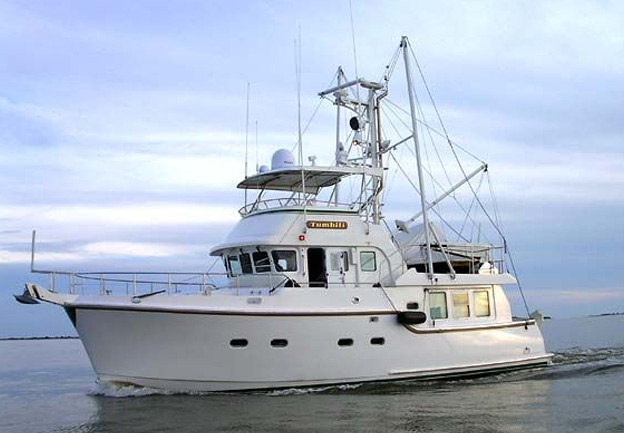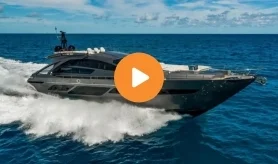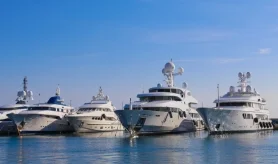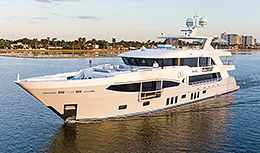- Alaskan Yachts
- Azimut Yachts
- Back Cove Yachts
- Beneteau Yachts
- Benetti Superyachts
- Bertram Yachts
- Boston Whaler
- Broward Yachts
- Buddy Davis Sportfish
- Burger Yachts
- Cabo Yachts
- Catamarans
- Carver Motoryachts
- Center Console
- Chris-Craft Yachts
- Cruisers Yachts
- DeFever Trawlers
- Dufour Sailboats
- Fairline Yachts
- Feadship Yachts
- Ferretti Yachts
- Formula Yachts
- Fountaine Pajot Cats
- Grady-White
- Grand Banks Trawlers
- Hargrave Yachts
- Hatteras Yachts
- Hinckley Picnic Boats
- Horizon Yachts
- Hydra-Sports
- Intrepid Boats
- Jarrett Bay Sportfish
- Jeanneau Yachts
- Kadey-Krogen Trawlers
- Lazzara Yachts
- Lekker Boats
- Luhrs Sportfish
- Marlow Yachts
- Maritimo Yachts
- Marquis Yachts
- McKinna Motoryachts
- Meridian Yachts
- Midnight Express
- MJM Yachts
- Mochi Craft
- Neptunus Motoryachts
- Nordhavn Trawlers
- Nordic Tugs
- Numarine Yachts
- Ocean Alexander Yachts
- Offshore Yachts
- Outer Reef
- Oyster Sailing Yachts
- Pacific Mariner Yachts
- Palmer Johnson Yachts
47 Nordhavn
![]()

Source: Scott Shane, Yachting Magazine
This passagemaker is strong, smartly designed and whisper-quiet.
I recently watched, for the umpteenth time, the 1970 classic Airport. A gruff George Kennedy delivers my favorite line after he powers a grounded Boeing 707 through a snowbank. A technician remarks that the 707’s manual says the aircraft can’t take the strain Kennedy has just successfully put on it.
“Remarkable thing about the 707”, he replies. “It can do everything but read.”
I tested the new Nordhavn 47 and browsed her precise owner’s manual, and I believe this motoryacht is strong enough to handle almost anything George Kennedy, or Neptune for that matter, can swing at her. She is, in the spirit of Nordhavns past, a properly powered, heavy and voluminous boat that travels efficiently with almost as much weight below the waterline as above.
The world travels of Nordhavn 40, 46-, 50-, 57- and 62-footers are well-documented (“Powerful Voyage”, December 2002). Jim Leishman, co-founder of Pacific Asian Enterprises, was the writer responsible for revising the bible of the cruising world, Voyaging Under Power, and he and his partners stick to their formula to ensure each hull provides stellar passagemaking performance.
In essence, Nordhavns are built with three ratios in mind: displacement/length, speed/length and above water/below water area. A high D/L ratio ensures the volume and displacement necessary for self-sufficient cruising (the heavier the construction and room for stores, the better for open-ocean travel). The S/L ratio helps to determine hull speed and efficient power. Hull speed can be ascertained by multiplying 1.34 by the square root of the waterline. Each Nordhavn hull looks to have a 1.1 or 1.2 ratio. Last is the A/B ratio, which Pacific Asian Enterprises tries to keep at 2.1 to 2.7 (compared with commercial fishing trawlers, which have ratios under 2, and some recreational trawlers, which have ratios closer to 4 or more).
These ratios are tried and true for the folks at Pacific Asian Enterprises, so much so that with the 47-footer, aside from some minor details, Leishman was quite satisfied with hull number one.
The living space on the 47 will not disappoint owners moving up within the line or switching from cruising sailboats or planing motoryachts. They should be comfortable, whether the boat is used for long passages or as full-time living quarters.
This boat’s real story, though, is her machinery space. Engineroom access is via a watertight door within the master cabin compartment amidships, at the pitch axis. The machinery space is designed so that even a novice boater, manual in hand, can understand, troubleshoot and maintain the components.
Entering the space and looking aft, the 173 hp Lugger is on centerline. A stainless-steel grab rail skirts the engine’s perimeter, an asset for performing tasks under way. Abaft the main, to port, is the 40 hp Yanmar auxiliary engine. While many single-engine powerboats, including commercial trawlers, venture tens of thousands of miles without backup power, I see that little gray Yanmar as peace of mind. It is a V-drive configuration with a separate shaft, a folding propeller and a mechanical transmission. It can power the 47 at 5 knots, according to Nordhavn. To starboard, enshrouded in a hush box, is a 12kW Fischer Panda generator. On the after bulkhead is a watertight door with double dogs that leads to the lazarette.
The high-quality craftsmanship includes finished wells, molded liners and careful penetration of each bulkhead and divider. All wire runs are neat, and fittings are robust. The vents and blowers are powerful. The AC/DC fixtures create such good lighting, a flashlight would be needed only to look under the engine.
Also in this space is the origin of one of the Nordhavn 47’s greatest attributes: sound attenuation. It has been shown that during long voyages, excessive sound can cause fatigue, which leads to accidents and clouded judgment. The 47 eliminates this problem with a combination of 3-inch-thick Nidacore and 2-inch foam and lead insulation, along with a dry stack exhaust. The exhaust exits via a double-walled pipe and uses resilient mounts and expansion joints all the way up the spar. This system enhances reliability by eliminating the heat exchanger, though it costs more to rig and consumes interior space. Heat from the engine is released via a keel cooler.
Is it worth the trade-offs? When we first left the dock for our sea trial, I thought my decibel meter was broken or had a dead battery. The 47 exhibited the lowest sound readings of any boat I have tested. Even at full load, the readings were equivalent to those of some express boats at idle. During the long passages Nordhavn owners tend to undertake, this whisper-quiet ride will be invaluable.
Fuel is delivered to the engine via an aluminum supply reservoir; the fuel feeds are at the bottom of the tank, the return on top. A sight gauge can be used to monitor fuel burn, and a sediment trap and water probe are incorporated. The main fuel cells are molded fiberglass, as are all the other tanks, and the entire tank can be checked via an inspection plate. The tank is fully baffled with replaceable chambers-quite an asset during an extended trip or when putting a boat up for sale. A smaller aluminum wing day tank feeds the auxiliary engine.
As you would expect in a Nordhavn, the electrical system is fully redundant. Four alternators provide power, and all can be run in parallel. The 270- and 35-amp alternators run off the main engine, and the 80-amp alternator runs off the Yanmar. A 30-amp alternator is on the generator.
The hull is of solid construction (Leishman was quick to say Pacific Asian Enterprises has never had a structural failure due to grounding). The 47 is strong were it counts. While I was inspecting the forward stateroom, I could hear the voices of the crew on the foredeck, but their footsteps were barely audible.
Her bridge is Portuguese-style and built for the open ocean. The starboard side deck is covered. The bow houses a large Maxwell winch and a watertight Freeman hatch. The forward compartment will hold 400 feet of chain and is structural, but does have a drain into the bilge.
The pilothouse interior is ship-like and set up for long passages. Handling is in keeping with what you would expect from a displacement hull, and the skipper need not strain to look at gauges or shipping lanes. The 47 is steady as she goes, with a detectable yet orderly motion. The Naiad stabilizers do their job, and the large wheel delivers the power. Reduction was increased from 3:1 to 4:1 on this model, and she can spin in slightly less than two boat lengths without the aid of the thruster.
I have read some other reviews of the Nordhavn 47, and they all have the same problem this one does: getting to the end without devoting the proper accolades to the two-stateroom interior’s décor, and to overall fit and finish. Consider that a testament to the builder, and check out the accompanying photos to see how the interior lives up to the same standard.



